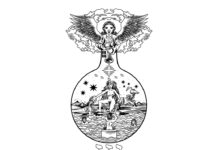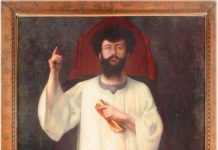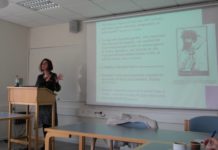Introducing the Rosicrucian Manifesto Temples of Europe
I’ll say it here, only once: follow the footprints of the gods and you shall find the Rosicrucians.
There is a big secret hiding out in the corner of Pansophy, the underground philosophy which was circulated by the early Rosicrucians. Today I’ll share more on that story, and this post ties together two of my earlier entries, namely ‘Are the Rosicrucians Really Christian’ and ‘Rosicrucian Pansophy.’
The first post revealed the Rosicrucian connection to the prophecy of Hermes, that one day the gods of Egypt shall return and be installed into a talisman structure, which was to become the seven sided tomb of Christian Rosenkreuz. This tomb itself became a talisman type instrument that would become a powerhouse towards establishing the Hermetic ‘City of the Sun’ in the Rosicrucian vision.
The second post showed that Pansophy was the true name of this utopian vision for society, that not only did the Rosicrucians provide an occult system of regeneration but that the Rosicrucian tomb with its seven planetary sides was also a model for a future golden age they envisioned.
Pansophy became the byword amongst early Rosicrucians for worldwide regeneration.
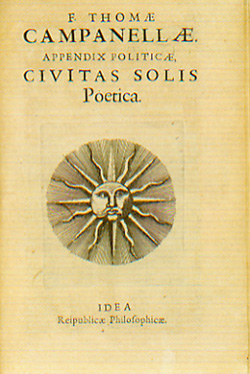 The City of the Sun model was termed Christianopolis by Andrea, writer of the first Rosicrucian manifestos, and it was called Civitas Solis by Thomaso Campenella. Both were based upon the idea of New Atlantis, but followed a heliocentric model, meaning it had a solar center, positioning either Apollo or Christ at the city center so that the entire city was modeled after a planetary harmony that revolved around a central temple to the sun deity. The walls of these cities were educational, an encyclopedia of knowledge, becoming a teaching vehicle, so that its inhabitants would understand the meaning and connection of all nature with Christ/Apollo the regenerator casting its rays upon all existence.
The City of the Sun model was termed Christianopolis by Andrea, writer of the first Rosicrucian manifestos, and it was called Civitas Solis by Thomaso Campenella. Both were based upon the idea of New Atlantis, but followed a heliocentric model, meaning it had a solar center, positioning either Apollo or Christ at the city center so that the entire city was modeled after a planetary harmony that revolved around a central temple to the sun deity. The walls of these cities were educational, an encyclopedia of knowledge, becoming a teaching vehicle, so that its inhabitants would understand the meaning and connection of all nature with Christ/Apollo the regenerator casting its rays upon all existence.
Most fail to realize is that these models were not just theories.
The City of the Sun was built in reality by the Rosicrucians.
They were used as initiatory gardens, where attendees would be led to experience the Rosicrucian manifestos in reality, and see for themselves Pansophy come to life.
I’ll keep drumming it into your bloody head until you get it: there are six Rosicrucian manifestos.
The first is the Reformation of the Whole Wide World by Order of Apollo. Then there are the main three, the Fama, the Confession and the Chemical Wedding, where we see Venus appear. The next two manifestos are the Mirror of Wisdom, where Pansophy is mentioned as the wisdom of the Rosy Cross. The final manifesto is the Pegasus of the Firmament which was in the legend of Bruno was a divine guardian set to keep watch over the mountain of Apollo, and Apollo himself appears in this manifesto.
The Reformation by Order of Apollo was actually published together as the first section to the Fama Fraternitatis, so that at the time most people knew they came hand in hand. Later neo-Rosicrucians forgot this idea and dumped poor old Apollo and decided ‘let’s ignore that Venus bit as well.’
As to the Pansophy term that crops up and yes… people ignored that too, well that was coined by Comenius who was a student and friend of Andrea. There are three Pansophic manifestos according to Comenius as well. They are New Atlantis, Christianopolis and Civitas Solis.
Now let’s add those apples and oranges!
That’s right, what if you took the gods that appear in these six manifestos, which are Apollo and Venus, and then go ahead and bring those together in brick and mortar Pansophic temple space.
Apollo + Venus + City of the Sun
Equals = the Garden of Versailles
‘Common Sam, you’ve got to be kidding’ I can already hear you saying.
No, no buggery at work. The fact is one of the major designers behind the Garden of Versailles was actually a Pansophist and belonged to an important Rosicrucian brotherhood.
There are several Hermetic monuments this blog post can’t cover in full, but the Garden of Versailles represents several important features, including Apollo and his horses in a watery fountain, and most importantly a Grove of Venus. Oh, did that penny just drop?

Like the City of the Sun the lesser apartments were arranged around the king’s residence. Le Brun designed the layout to mirror Ovid’s cosmological description in Metamorphosis. The king was Louis who was called the Sun King, where we start to see the vision of Pansophy come to life.
Still don’t see the connection? Here are two more pennies for your pocket:
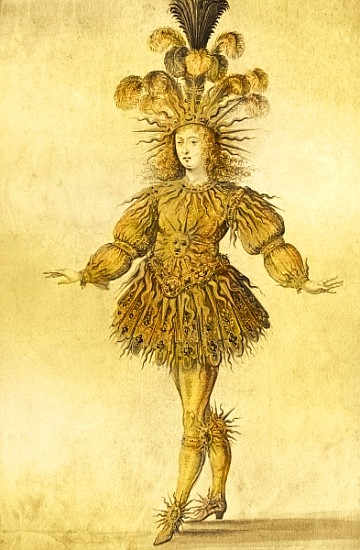 Thomaso Campenella, author of the Pansophic treatise ‘Civitas Solis’ actually inspired Andrea to write his own version ‘Christianopolis.’ His beloved student was a member of Andrea’s group, known as the Tubingen Circle. As a matter of fact, Thomaso Campenella visited King Louis, who was then just a one year old child, casting the child king’s horoscope. His Civitas Solis or ‘City of the Sun’ anticipates the creation of Versailles, in which the Sun King would grow to rule.
Thomaso Campenella, author of the Pansophic treatise ‘Civitas Solis’ actually inspired Andrea to write his own version ‘Christianopolis.’ His beloved student was a member of Andrea’s group, known as the Tubingen Circle. As a matter of fact, Thomaso Campenella visited King Louis, who was then just a one year old child, casting the child king’s horoscope. His Civitas Solis or ‘City of the Sun’ anticipates the creation of Versailles, in which the Sun King would grow to rule.- Nicodemus Tessin was one of the major designers at the Garden of Versailles. In fact he was a member of the secret Hartlib Circle, a circle known to be Rosicrucian. Their name was the Invisible College. During his time in the Hartlib Circle he spent years drafting designs to actually bring Christianopolis into reality, as either an actual college or city. It was Tessin who proposed the building of the Temple of Apollo at Versailles.
I might as well add: actually one of the members of the Hartlib Circle was Skytte Bengt, a student of Comenius and advocate of Pansophy. It was he who had also launched the project of creating the city in real under the same of Sophopolis. Thus a clear lineage from the first Rosicrucians exists, via: Andrea – Comenius – Bengt – Tessin – to the Garden of Versailles.
The Garden of Versailles as a Rosicrucian project sought to manifest the promise of the manifestos, the Reformation of the Whole Wide World by Order of Apollo, with every aspect of the palace representing the manifestos brought to life. Louis the Sun King would become herald of a cultural regeneration and the palace would become a center from which to awaken the world.
All of this might seem a bit too convenient, BUT:
Attendees were also led to the Temple of Venus
Just like Christian Rosenkreuz in the Chemical Wedding
So, that covers the manifestos, Apollo + Venus + City of the Sun = Versailles Palace.
And the Rosicrucians knew it.
This first image below is from the Amsterdam branch of the Golden Rosenkreuzer. You can see the Rosicrucian candidate being led through a pit of serpents until he is led to the ‘Temple of Wisdom.’ Sophia is mentioned in relation here. As we know in Rosicrucian Pansophy our Venus and Sophia are used interchangeably. Seems good and well doesn’t it?
But the next image is from the ‘Versailles Plan’ of Jean Delegrive, from just thirty years earlier.
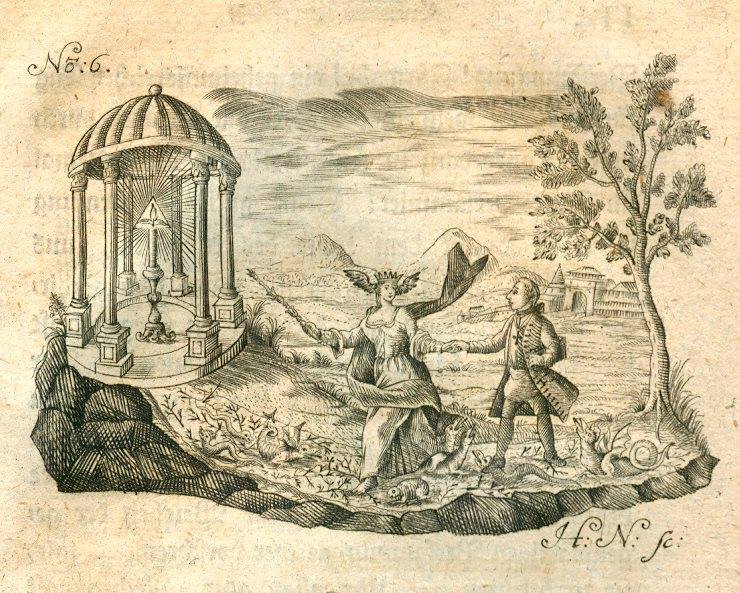
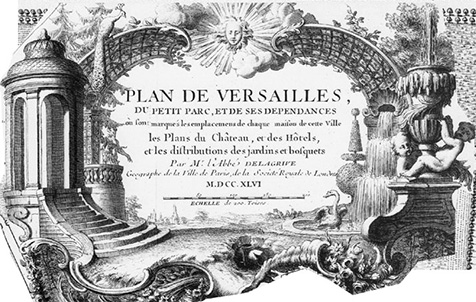
The image is of an actual temple to Venus featured at Versailles. It is often called the ‘Grove of Venus’ for many reasons. Actually the site was not only built in relation to the Chemical Wedding mystery but combines a treatise published at the same time as the manifestos. In the ‘Hermetic Museum’ we read about an alchemist who is searching for the ‘Sulfur of the Work’ and in the legend he learns that the grove in which he finds himself belongs to Venus. Thus the Rosicrucians brought the concept to life at Versailles through the visionary experience of both Rosenkreuz and the Hermetic Museum figure.
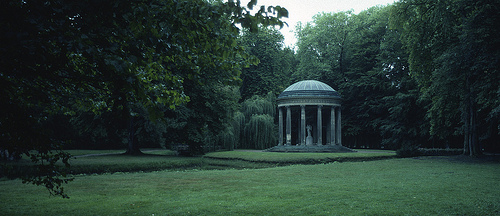
Actual Temple of Wisdom at Versailles Grove of Venus
On maps the grove at Versailles is typically given as the ‘Queens Grove,’ though it was actually named the Grove of Venus on accord of the statue at its center. Clearly the temple of Venus shown by the Golden Rosenkreuzers was linked to a Rosicrucian tradition brought to life at Versailles.
And I might add at three other locations in Germany.
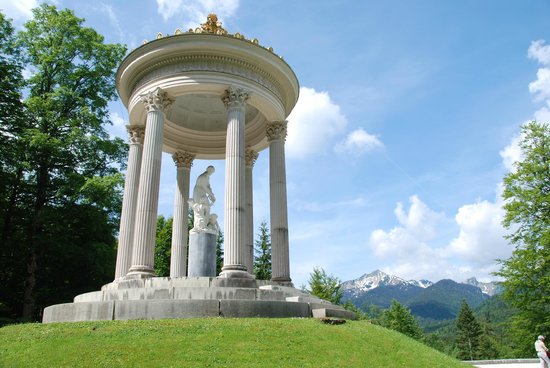 Indeed what most people do not realize was that the Rosicrucian Pansophist didn’t only rely on masonic type initiations. The Germans also created the Labyrinth at Worlitz, where the Temple of Venus is built on two grottoes, one dedicated to earth and fire, and the other to water and air. By passing through the labyrinth one hopes to find the Temple of Venus just like Christian Rosenkreuz. On the journey the candidate is purified by the god of winds and the other elements. A harp was once located there for the muses and cultural regeneration.
Indeed what most people do not realize was that the Rosicrucian Pansophist didn’t only rely on masonic type initiations. The Germans also created the Labyrinth at Worlitz, where the Temple of Venus is built on two grottoes, one dedicated to earth and fire, and the other to water and air. By passing through the labyrinth one hopes to find the Temple of Venus just like Christian Rosenkreuz. On the journey the candidate is purified by the god of winds and the other elements. A harp was once located there for the muses and cultural regeneration.
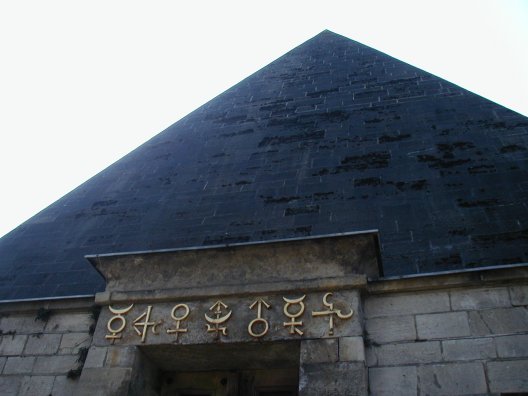 Another Temple of Venus is found at Linderhof Palace in Upper Bavaria, as made by King Ludwig II, who Christopher Macintosh showed to be a Rosicrucian. There is one more at Potsdam as well, built by the Rosicrucian King Frederic William II of Prussia, featuring a pyramid!
Another Temple of Venus is found at Linderhof Palace in Upper Bavaria, as made by King Ludwig II, who Christopher Macintosh showed to be a Rosicrucian. There is one more at Potsdam as well, built by the Rosicrucian King Frederic William II of Prussia, featuring a pyramid!
Thus four Temple of Venus locations are to be found, all of them built by Rosicrucian kings or architects. All four are exactly the same as the one shown in the Rosicrucian ritual, where the candidate is led to the Temple of Wisdom, within a grove like the Hermetic Museum.
Might as well also add about Versailles; that in the famous Affair of the Diamond Necklace the prostitute who was recruited to pretend to be the Queen and wait for the Cardinal at the Temple of Venus in the dark of the night was given special instructions. She was told to hand over to the arriving Cardinal nothing but a rose and say only ‘You know what this means.’
Now, it is quite clear that most initiates were aware of the Rosicrucian nature of these gardens.
Swedenborg provides the best clue and shows he was an initiate in its mysteries.
He writes that Apollo represents ‘science and experience, the Pegasus human understanding, the water its clearness, and the Muses are human learning.’
In fact after learning of Tessin’s Pansophic plan for Versailles it was Swedenborg who wrote an allegory describing the structures/gardens Versailles through his grove of ‘DEJODES the Palladian hero.’ According to Ackerman the name of this figure stands for Dee-Yod…
Swedenborg writes ‘You can see the triple folding doors always open to their hero, and you can see the pyramids open in three directions in a hundred places.’
Scholars agree that Dejodes represents King Louis, yet it is quite clear that the allegorical journey is designed to walk the Palladian Hero through the journey of CRC, who in the Chemical Wedding comes upon the same ‘triangular door’ before he sees Venus. Thus, to my mind, Swedenborg is projecting King Louis into the Christian Rosenkreuz drama to complete the Pansophic promise.
Thus the City of the Sun was a RC vision completely brought to life.
Clearly the Temples of Apollo and Venus
Were Ways to Fully Experience the Rosicrucian Tradition.
This is why I think ‘Rosicrucian Tours to Egypt’ are well… just stupid. The brilliance of our tradition is to be found at such living Cities of the Sun, real life Groves of Venus where we may experience the Rosicrucian manifestos fully. You never know, after reading this maybe a few people will feel the call to make a sacred pilgrimage to these sites in France and Germany just like I did.
I’ll round off this post by saying I hope people are starting to realize the importance of Pansophy in relation to the Rosicrucian tradition. ‘Pansophy’ and ‘Rosicrucian’ are two inseparable terms. What’s more, as a voice for restoring tradition, I encourage various groups towards a return to such outdoor grove initiations (as opposed for Masonic hall type initiations), which are suggested in these visual experiences of the manifestos as they are found scattered across Germany.
There is a lot more to this, but this short post will have to do for now.
Remember, sharing is caring 🙂
Samuel Robinson, the Pooh-Bah Down Under.
Brief Summary of the Manifesto Temples
From a Rosicrucian Life Hacker
Six Manifestos
Written by Rosicrucians
Reformation Document
By Order of Apollo
Pansophist Planned
City of the Sun
Solar Temple Center
Hermetic Museum Grove
Chemical Wedding Triangle Doors
Venus Appears to CRC
Secret Temple
Built by Rosicrucians
Reformation Monument
Built to Apollo
Pansophist Designed
City of the Sun
Sun King Center
Grove of Venus
Triangle Doors to Every Direction
Concludes at Venus Statue
‘Follow the Footprints of Venus and Apollo
And you shall find the Rosicrucians.’
Samuel Robinson

